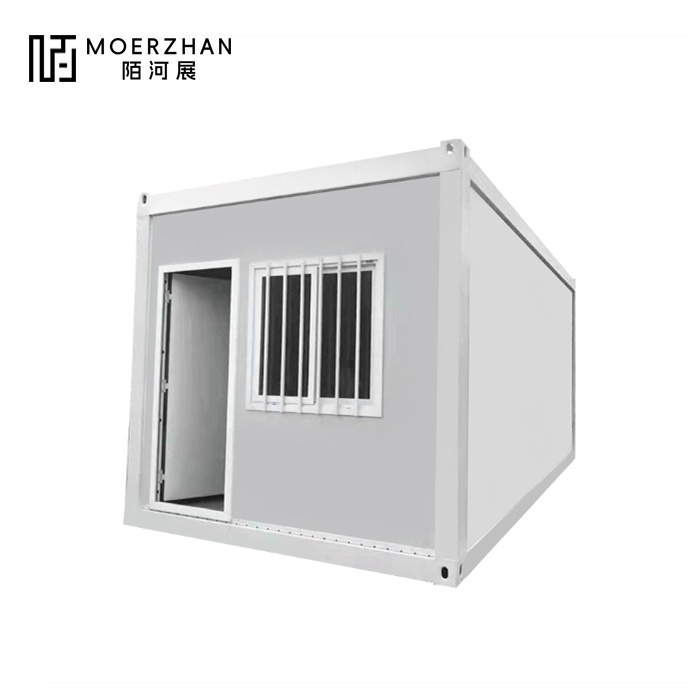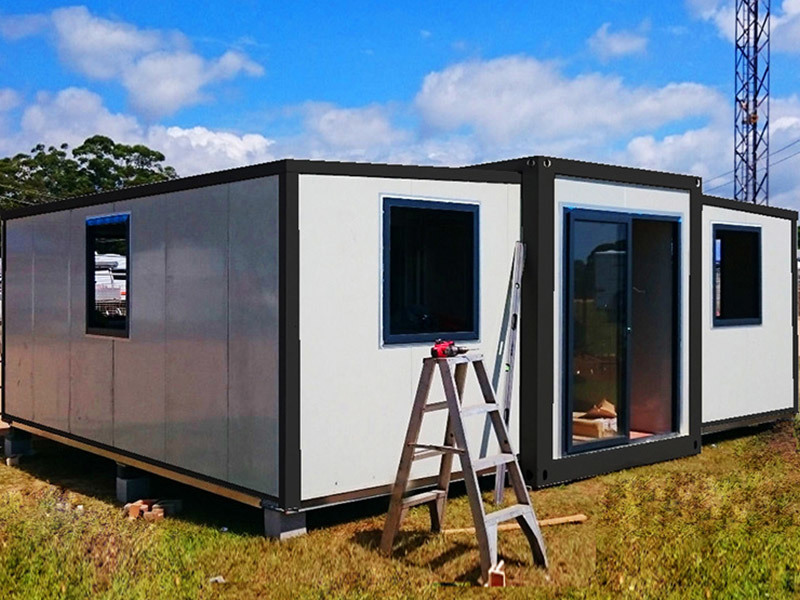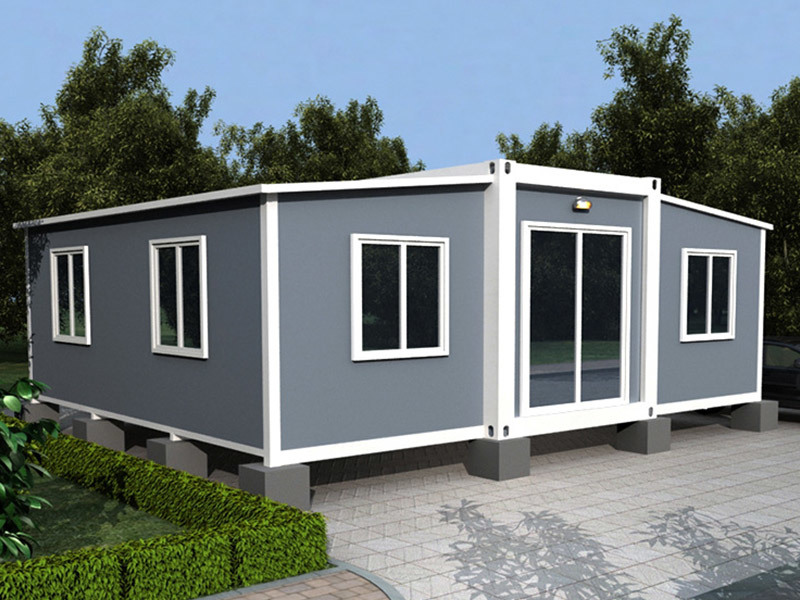Committed To Providing Customers With One-Stop Integrated Housing Solutions
How Passive Prefab Homes Can Lower Your Energy Bills
Jul 03,2025

How Passive Prefab Homes Can Lower Your Energy Bills
Table of Contents
- What Are Passive Prefab Homes?
- Benefits of Passive Prefab Construction
- Energy Efficiency in Passive Prefab Homes
- Design Principles for Passive Prefab Homes
- Insulation and Materials Used
- Integrating Renewable Energy Sources
- Real-World Examples of Cost Savings
- Frequently Asked Questions
- Conclusion
What Are Passive Prefab Homes?
Passive prefab homes are innovative constructions designed with a primary focus on energy efficiency. They combine the principles of passive house design with prefabricated construction methods. Prefabrication means that parts of the home are built in a factory setting, allowing for enhanced quality control and reduced construction time. This synergy results in homes that not only minimize energy consumption but also provide comfort and sustainability.
Key Features of Passive Prefab Homes
- **Super Insulation:** These homes are built with high-quality insulation that reduces heat loss in winter and heat gain in summer.
- **Air Tightness:** Passive prefab homes have a tightly sealed building envelope, which prevents drafts and unwanted airflow.
- **Energy Recovery Ventilation:** This system ensures a continuous supply of fresh air while recovering heat, minimizing energy loss.
- **Strategic Orientation:** The design often utilizes passive solar gain by positioning windows and walls to capture sunlight effectively.
Benefits of Passive Prefab Construction
The advantages of passive prefab homes extend beyond energy savings. Homeowners can expect a host of benefits that make these structures a smart investment.
1. Reduced Energy Bills
One of the most compelling reasons to consider passive prefab homes is their ability to significantly lower energy bills. These homes are designed to require minimal energy for heating and cooling, leading to substantial cost savings over time.
2. Increased Comfort
With refined temperature control and superior air quality, passive prefab homes create a comfortable living environment. Homeowners experience a consistent temperature throughout the year, eliminating cold spots and drafts.
3. Environmental Sustainability
Passive prefab homes contribute to environmental sustainability by reducing reliance on fossil fuels. The use of renewable energy sources and energy-efficient technologies minimizes the carbon footprint of homeowners.
4. Improved Resale Value
As the demand for energy-efficient homes continues to rise, passive prefab homes often boast higher resale values. Buyers are increasingly looking for homes that reduce long-term costs while promoting sustainability.
Energy Efficiency in Passive Prefab Homes
Energy efficiency is the cornerstone of passive prefab homes. By implementing strategic design and modern technologies, homeowners can drastically decrease their energy consumption.
1. Heating and Cooling Solutions
Passive solar heating is a crucial element in these homes. Large south-facing windows capture sunlight during winter months, while overhangs provide shade in summer. This natural heating and cooling strategy minimizes the need for mechanical systems.
2. Energy-Efficient Appliances
Incorporating energy-efficient appliances further enhances the energy-saving potential of passive prefab homes. From refrigerators to washing machines, using ENERGY STAR-rated appliances can lead to significant reductions in energy usage.
3. Smart Home Technology
Integration of smart home technology allows homeowners to monitor and manage energy consumption efficiently. Smart thermostats, lighting systems, and energy monitoring devices provide real-time data and control over energy usage.
Design Principles for Passive Prefab Homes
The design of passive prefab homes relies on several key principles that enhance their energy efficiency and overall effectiveness.
1. Orientation and Window Placement
Designing a home with optimal orientation ensures maximum solar gain while minimizing heat loss. South-facing windows allow sunlight to warm the interior during winter, while strategic shading helps keep the home cool during summer.
2. Thermal Mass
Incorporating materials with high thermal mass, such as concrete or brick, helps stabilize indoor temperatures. These materials absorb heat during the day and release it at night, reducing the need for heating and cooling.
3. Ventilation Strategies
Effective ventilation strategies are essential for maintaining indoor air quality. Employing mechanical ventilation with heat recovery ensures a fresh air supply without compromising energy efficiency.
Insulation and Materials Used
The effectiveness of passive prefab homes largely depends on the quality of insulation and materials used during construction.
1. Types of Insulation
High-performance insulation materials, such as cellulose, spray foam, and rigid foam board, are commonly used. These materials create a thermal barrier that dramatically reduces heat transfer.
2. Windows and Doors
Triple-glazed windows and insulated doors are crucial components. They provide superior insulation and minimize heat loss while allowing natural light to enter.
3. Sustainable Building Materials
Utilizing sustainable materials, such as reclaimed wood or recycled steel, not only enhances the environmental credentials of the home but also contributes to energy efficiency.
Integrating Renewable Energy Sources
While passive design principles focus on energy efficiency, integrating renewable energy sources can further decrease energy costs.
1. Solar Panels
Installing solar panels can help offset energy consumption by generating clean electricity. Homeowners can benefit from net metering, where excess energy produced can be fed back into the grid for credits.
2. Wind Energy
For some locations, small wind turbines can complement solar energy systems. By harnessing wind energy, homeowners can diversify their renewable energy sources and enhance energy independence.
3. Geothermal Heating
Geothermal heat pumps use the earth's stable temperature to provide efficient heating and cooling. This system can significantly reduce energy bills, especially in extreme climates.
Real-World Examples of Cost Savings
Numerous homeowners have experienced substantial savings by transitioning to passive prefab homes. Case studies illustrate the effectiveness of these designs.
1. Case Study: Eco-Friendly Community in Vermont
In an eco-friendly community in Vermont, homeowners reported an average energy savings of 60% compared to traditional homes. These savings stemmed from the combined effects of superior insulation, high-performance windows, and renewable energy systems.
2. Case Study: Urban Passive House in San Francisco
An urban passive house in San Francisco showcased an innovative design that utilized both passive solar heating and energy-efficient HVAC systems. Homeowners enjoyed lower utility bills and consistently comfortable indoor temperatures year-round.
3. Case Study: Rural Prefab Home in Oregon
A rural prefab home in Oregon highlighted the benefits of integrating solar panels. Homeowners not only achieved energy independence but also received tax credits that further reduced overall costs, demonstrating the long-term financial viability of passive prefab living.
Frequently Asked Questions
1. What is the primary purpose of passive prefab homes?
The primary purpose of passive prefab homes is to maximize energy efficiency, thereby reducing energy consumption and lowering utility bills while maintaining comfort and sustainability.
2. How much can I save on energy bills with a passive prefab home?
Savings can vary significantly, but homeowners can expect reductions in energy bills ranging from 50% to 90% compared to traditional homes, depending on design and location.
3. Are passive prefab homes more expensive to build?
While the initial investment may be higher due to advanced materials and technologies, the long-term savings on energy bills typically offset these costs, making them a financially sound choice.
4. Can I retrofit my existing home to be more energy-efficient?
Yes, many concepts of passive design can be applied to existing homes through retrofitting, such as improving insulation, upgrading windows, and installing energy-efficient appliances.
5. Do passive prefab homes require special maintenance?
Passive prefab homes generally require similar maintenance to traditional homes. However, regular checks on insulation, ventilation systems, and renewable energy sources will ensure optimal performance.
Conclusion
Passive prefab homes represent a groundbreaking approach to residential construction, marrying energy efficiency with modern design. By understanding the principles behind these homes and integrating renewable energy solutions, homeowners can experience significant reductions in energy bills and contribute to a more sustainable future. With numerous real-world examples showcasing successful implementations, now is the ideal time to consider the benefits of passive prefab living for both financial savings and environmental stewardship. Embracing this innovative housing solution is not only a practical choice but a responsible investment in a healthier planet.
Hot Tags:
Contact Us
E-mail:
Phone/WhatsApp:
Address:
No. 132 Renmin West Road, Fucheng County, Hengshui City, Hebei Province



